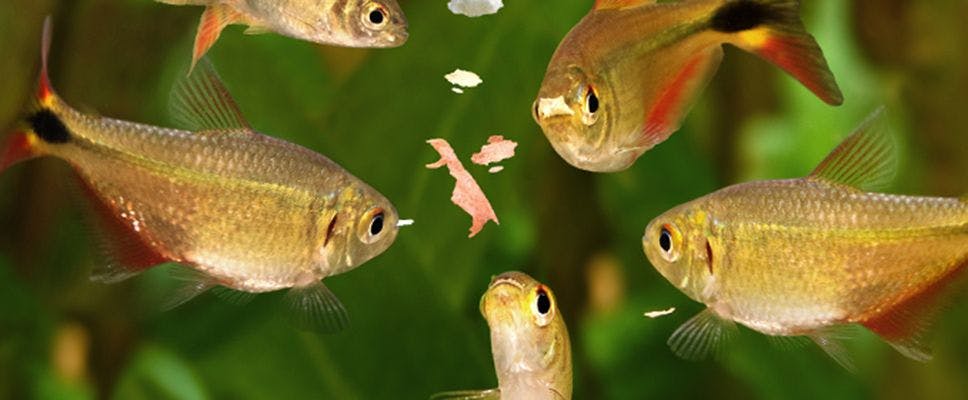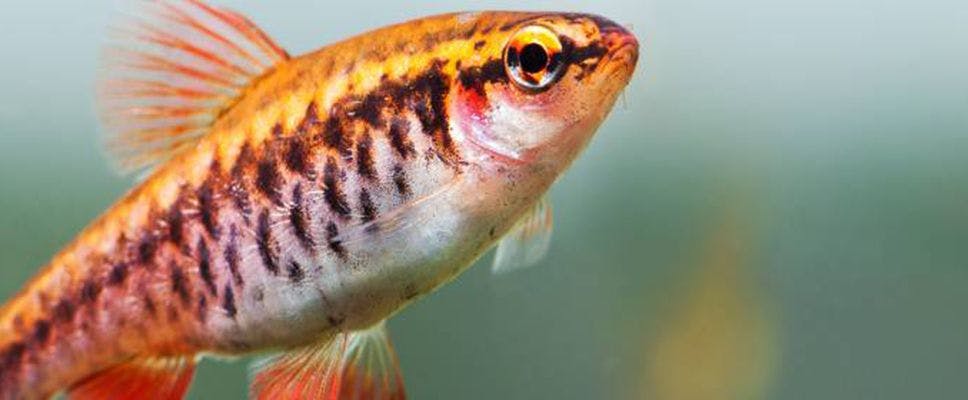
Are you about to buy a fish, but just need a little bit more info on feeding requirements? Here’s all the basics on what to feed your fish, how much, and how often.
Before you commit to a new fish family member, it’s really important to understand what they eat and how much you can feed them. Feeding your fish, the right way, will ensure they live a healthy life. Like some other pets, fish tend to eat whenever they’re hungry and when food is available, so it becomes very easy to over-feed them, which can bring about a slew of other problems including stressing your fish – so let us help you avoid this.
In this article, we’ve compiled a handy guide around things to note around feeding, so you can be sure that you’re providing the best care for your fish.
Please use this as a guide only. If you’d like to find out more about your fish’s dietary requirements, please reach out to your friendly local PETstock fish specialist. Find out where your nearest PETstock store is with our Store Finder.
Types Of Fish Food
Generally, both cold (fresh) water and tropical fish can eat the same food, though, there are also different varieties suitable for either types or even down to specific breeds. While the easiest and lowest maintenance foods are the dried varieties - flakes, granules, pellets, sticks, etc. - some fish do prefer live food, frozen or not, such as worms, shrimp, etc.
Be sure to do your homework - always check on the preferred types of foods or any dietary requirements before you purchase the fish, as this will go a long way in keeping your fish healthy and happy.
How Much To Feed Your Fish
As a general rule of thumb, add only the minimal amount of food each time you feed. It can be harmful to the fish if there’s an excess of food in the water as it not only means you’re over-feeding them, but the leftover food can dirty the water and clog up the tank filter, resulting in a stressful environment for your fish.
Fish only need to eat for about 30 seconds to be satisfied if you are feeding them in intervals throughout the day, so use that as a starting point to minimise wastage. That said, do observe your fish whenever you feed them, particularly in that first 1 - 2 months, so you can take notes on how much they eat, for how long, to inform your regular feeding routines.
Going on holiday? Aside from asking your neighbour/friend to drop in, there are also options like automatic feeders or gel/feeding blocks that you can look into before you head off. At PETstock, we have a variety of feeders that you can check out.
- With new fish, feel free to decrease feeding frequency at the start to keep any levels of harmful toxins down
- Do consult your vet, or even your local PETstock fish specialist to learn about daily requirements for the breed(s) you choose
- One important thing to note: Fish will still eat even when they’re not hungry, so be aware in case you do end up over-feeding

How Often Should You Feed Your Fish
The truth is, there’s no one rule around frequency of feeds, as this also depends on the breed and size of fish you have.
We do, however, recommend that you feed your fish 2 - 3 times a day, with minimal amounts each time, as opposed to one huge feed in the morning/night. This simply helps manage your fish’s food intake and prevents things like over-feeding or excess food in the tank, which can lead to your fish developing serious health issues due to effects to the chemistry of your tank’s water.
Storing Fish Food
Depending on the type of food you have brought for your fish, will determine storage. For dry foods, you should store in a cool and dry place. For other types of food, it is sometimes best to keep them in the freezer to retain its vitamins. So, always double check the written instructions on the food label and/or consult one of our PETstock team members in store.
When getting new fish, feel free to decrease the feeding frequency at the beginning to avoid increasing levels of any harmful toxins in the water.
Again, this is simply a guide. Do consult your vet, or your local PETstock fish specialist to learn more about the daily nutritional requirements for the breed(s) that you choose. Getting a good understanding at the start will go a long way in keeping your fish happy and healthy for a long time.
If you’d like more detailed advice on pet care, stop by your local PETstock store and chat with our friendly staff.